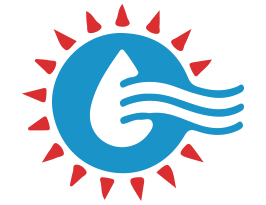You don’t have to be an expert plumber to keep your plumbing system up to standard. Knowing the basics will prevent a lot of problems and will come in handy in the event of an emergency.
Here are seven plumbing fundamentals every homeowner should know.
1. Know Where the Main Shutoff Valve is Located
In the event of a burst pipe, turning off the water at the source will prevent flooding and additional water damage. To do this, you’ll need to know the location of the main shutoff valve.
- Check along the exterior walls of your house. You’ll commonly find the main shutoff valve on the wall facing a street or sidewalk because that’s the direction your municipal water supply comes from.
- Read your property inspection report. If you can’t find the valve outside, your property inspection report should note the location in the document’s plumbing section. It should also include a photo of the valve.
If the valve is shaped like a wheel, turn it clockwise to cut off the water supply to your entire house. If it’s a lever, pull it up a quarter of a turn.
2. Know What Not to Flush
Here’s a good rule of thumb: If it’s not water, waste or toilet paper, don’t flush it. Common household items such as Q-tips, feminine hygiene products, floss, and cotton balls can create serious obstructions in your drain. If you have a septic system, flushing inappropriate substances, including chemicals and liquid drain cleaners, can shorten its life. In large cities, clumps of flushable wipes mixed with fatty substances have caused blockages and pipe failures.
3. How to Stop a Toilet From Overflowing
When your toilet is clogged, one of the first impulses is to give an extra flush in the hope that the water pressure will break up the blockage. If the clog does not move, the water in the bowl will start to rise. If you do not stop the water, it will overflow and make a nasty mess on your floor. You can interrupt this scenario by taking the lid off the toilet tank and closing the toilet flap valve with your hand. Water will stop flowing from the tank into the bowl -- crisis averted.
4. Use the Right Plunger
When you think of a plunger, you probably imagine a flat plunger. The flat bottom makes a seal around the drain in a bathtub or sink. For a clogged toilet, however, you'll want a flange plunger. The rubber cup on this type of plunger features an extended sleeve to fit within the contours of the toilet drain, creating strong suction.
5. Avoid Clogging Your Pipes with Food
Any food that does not readily dissolve in water can cause a clog. Unless you have a garbage disposal, you should avoid putting any kind of food scraps into your drain. It is especially important to refrain from pouring fat, grease, and oil down your sink drain. The fat may travel easily down the drain when it is hot. However, many fats congeal when they cool. They will coat the inside of your drain which can lead to slow or blocked drains.
6. Do Not Ignore Leaky Fixtures
Common household leaks, such as your dripping faucet, waste 10,000 gallons annually. Leaky fixtures are a common problem and will only become worse over time. A skilled plumber can quickly fix leaks, both seen and unseen.
7. Do Not Hesitate to Call a Professional
Expert plumbers go through a challenging training process to learn their trade. While you may be able to handle minor clogs with a plunger, a professional plumber has the equipment to clear blockages without resorting to harsh chemicals that are a temporary fix at best. Any time you are concerned about a leaky pipe, it is time to call in an expert. Amateur plumbers who undertake major fixes often end up doing more damage than good.
When you work with an experienced professional, you will have peace of mind knowing that your plumbing system will function as it should. Knowing these plumbing basics, and a qualified plumber on speed dial, is part of maintaining a healthy, happy home. To schedule an appointment with Gillece Services, call (412) 831-6199.






